Of Britain and America it can be said they are…
… “two countries divided by a common language.”
Of America and Europe the differences are so hugely diverse I could never even begin. I think that it would be true to say that cultural differences in woodworking separate the continents of North America from Europe in some measure too. I know that the UK is only a small part of Europe and in so many ways all of the EU countries are remarkably diverse and very different than one another and should not ever be lumped in as all being the same at all. One thing does stand out to me and that is the lack of unity in woodworking in Europe . In the US woodworkers really share that space of time called leisure and often I find a couple of guys who get 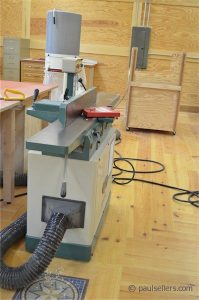
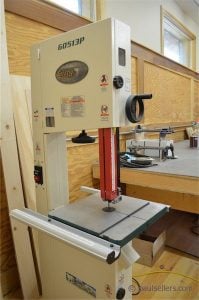
If I ask the show audience how many are professional woodworkers earning their living from working wood, it is very rare to see even one hand go up, but occasionally a hand will go up, sometimes, but rarely, two. An audience may average 60-70 people in each seminar I give and so out of around 700 people in a weekend, I probably see only 10-12 full-time woodworkers. Many North American woodworkers rely solely on machines for their woodworking and so most of the ones I meet have a fairly comprehensive workshop comprising tablesaw, bandsaw, planer, jointer and sliding arm chop saw, drill press and so on. Now yesterday I met a young woodworker living in an apartment and he told me some people make a plywood base that surrounds each leg and holds a tennis ball inside on which sits the bench leg at each corner. I think a horse mat would do the same thing.
So what is the governing factor that makes so broad a difference?

TV has power
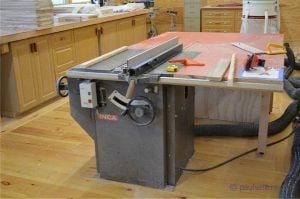
Another powerful influence that changed the face of woodworking in America was a man known as Norm Abram of This Old House fame and also The New Yankee Workshop. Whether it was good or not is not for me to judge, but it does seem that that this hero of North American woodworking changed the face of US woodworking big time and when I arrived to live in the USA I was constantly asked if I “ever watched Norm.” For some unknown reason, my working with hand tools somehow connected me with the power machine world even though there would absolutely no logical connection at all. I actually never watched Norm even once, but it’s here that we discover how in North America it became the Norm that Normalized machine-only woodworking to become the standardized way of working wood and so we discover the power of culture by what people say and what people do because culture defines people in very powerful ways. It did and does seem that as a direct result of the PBS TV presentations he delivered to camera, he persuaded hundreds of thousands of people, probably millions, to embrace the power tool world by presenting an unarguable way of working wood that removed the effort it took and also thereby the necessity of developed skill. People unwittingly admired this methodology and so we see at some level how this influenced a change that changed the way we not only perceive woodworking today, but and this is my belief, hid from sight what most woodworkers were looking for; a more peaceful and safer way to work with wood and of course the skill that that took. Even the amatuer woodworker across the continent now uses mainly industrial equipment to work wood for very simple tasks. So much is this the case, many woodworkers own no tools that are not powered by electricity or battery power. On the other hand, over in the UK, power woodworking never had that level of input, even though the programs ‘Norm’ was a part of were indeed broadcast on UK channels. It seems there was some constraint in the psyche of UK woodworkers that resisted the power world at some level and especially is this so at the amatuer level.
No space
In Britain, woodworkers most often work in the tail end of the garage or in a dedicated shed that can be as small as 5’ x 8’. British garages are often no more than 8’ wide and the length of the car plus 6”. Again, no room for benches and power equipment.
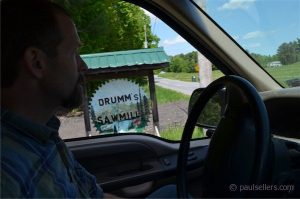
Today I see sustainable change
Just thoughts really.I have taught thousands of American woodworkers to work wood using hand tool methods. There seems a higher demand today than ever before and I think that this is because of many contributing factors not the least of which is the invasive presence power machines bring to the surrounding area. 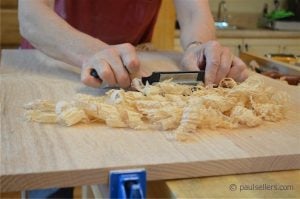


Not all of us learned from Norm!
I watched him once and shut him off because of all the shortcuts he took.
After all why make cheap stuff when you can buy it at IKEA for less?
I am self taught for the most part, driven by self intrest to develop my skills.
Friends, the Internet,school, woodworking shows and books have been my source of information.
When hand tools wouldn’t work for me I went to power tools.
That’s because they were not tuned or sharpened properly.
It’s only in recent years that I started using hand tools more.
For me its more about efficiency and a sense of history using old tools.
Plus I got tired of spending big bucks for power tools only to find hand tools did the job much better.
Tom Bittner, you said …
“Not all of us learned from Norm!I watched him once and shut him off because of all the shortcuts he took. After all why make cheap stuff when you can buy it at IKEA for less?”
Exactly!!! I was never impressed by Norms show. Just as you stated, I thought he made stuff that was merely butt joints held together with biscuits, dowels or some other method I consider to be a band-aid. I didn’t consider it to be a good quality product. Plus, he had, and used more machines than I could ever hope to acquire.
For too many years, I lived in apartments — not even on the ground floor — so, I just dreamt of maybe doing some *small stuff* with only hand tools. I didn’t realize what was really possible until the last year or so.
Now I’m fully engaged in building up my tools and skills. I’m still producing more “scrap wood” than final products worthy of bragging. 🙂 But, enjoying the process none-the-less.
However, I am beginning to wonder if my quest to work wood using only hand tools is really possible. I wonder if I should consider using a minimal assortment of power tools to dimension the stock, then do all the joinery with hand tools. I guess it just depends on how much time and effort one is willing to put into it.
I’d be interested to hear your thoughts, Paul’s thoughts — as well as anyone else’s thoughts on that.
Keep spreading the word. We have to help folks get off the conveyor belt
On Tue, Feb 26, 2013 at 2:35 PM, Russell Schmieder wrote:
There is more space in the USA and more wood too. Americans also have more disposable income – low taxes and often higher incomes. And tools cost half of what they do in Europe.
Then there’s culture. Americans greet change with enthusiasm. The dive into new hobbies with total commitment. Typical American behaviour would be to go from owning no tools to filling a whole shop in four months. This would not be wierd.
Europeans on the other hand, regard such behavior as adolescent and meet change with suspicion and fear. Excessive enthusiasm makes them uncomfortable. Nobody would build a woodworking shop unless they had a sound and practical reason to do so. Even the hobbyist wouldn’t start with wood, but rather with a course in wood picking up techniques so he could earn a proper certificate first. Add to it that social networks in Europe are really thick and established, so there is little interest in meeting new people and few have enough time for hobbies.
Of course Europe has its upsides too and I guess it varies a bit. At least this is my observation having lived on both sides of the pond for 20 years each.
Interesting article, it is always good to hear about other cultures. I get invited to talk to local woodturning and woodcarving groups in the South west of England, and know that there are thriving and dedicated groups of people pursuing there hobbies, some of who turn it into a business. I am actively involved in traditional wood crafts, spindle and bowl turning on the pole lathe and other almost lost crafts. This movement is growing and the UK has the largest green wood forum in the world. Not as big as the electric wood forums but growing. People are drawn to this because the investment is small and there is no roar and whine from electric machines. We can do it at home and even in the lounge. Interestingly, People in the USA have very limited choice in buying hook knives for spoon carving, but in the UK there are many world class tool makers selling to this niche market and selling to the USA market.
This post really struck a chord with me. I grew up woodworking with machines because that’s how I was taught and the only way I’ve ever know. I recently tackled a project that required dozens of mortise and tenons. I pulled out the drill/chisel jig I bought to attach to my drill press to make the mortises. I discovered that the jig did not fit my drill press and was forced to look for another method. I discovered Paul Seller’s videos in my search for an alternate method of cutting mortises. I could barely stomach the idea of cutting 36 mortises by hand, but Paul’s instruction gave me the confidence to give it a go. My first couple mortises were nothing to brag about, but after a few I had the hang of it and found it to be so much more fun and relaxing that using machines. Because of the stark contrast, I hadn’t realized until then the anxiety I felt while using machines, worrying about cutting off a finger and inhaling so much dust, and the long term affects of both. While chopping all those mortises with a simple bench chisel, I felt nothing but pleasure and contentment. What a revelation! I’ve now converted from Normism to the camp of Paul Sellers 🙂 With all due respect to Norm Abrams, I think he’s a fine craftsman. It’s just that most of us can’t afford 11 routers, a giant belt sander, dedicated mortiser, etc. to easily duplicate his methods. I’m looking forward to many more years of peaceful wood crafting thanks to the skills that Mr. Sellers is so generously passing along to the world.
There you go. The only way to master anything is practice. I just heard that some friends had a bench making session making the Paul Sellers’ bench and by the time they had finished surface planing all of the 2x4s they had planing down and moved with confidence. That’s how you become competent, confident then enjoy it .
For the lack of large circulation magazines in Europe, language fragmentation of the market would be a leading cause… along with the slow death of the magazine/newspaper distribution model. People no longer spend their whole life in a single country or even in a single linguistic zone, but the market hasn’t yet found a way to cope with it.
There are French woodworking magazines on the European market, but no newsagent carries them within two hours of where I live. There are German woodworking magazines available where I live, but I don’t read German. There are British woodworking magazines, but I only encounter them when I’m on a business trip to London. Of course, most of those magazines do seem to be about “machine-working man-made wood-substitutes” so it’s no big loss in the end.
Thanks for taking the trouble to respond to this. It clears the picture a little. Perhaps there is something we can do, I don’t know. Joseph and I are wondering if we can encourage woodworking asscoiations in Europe. Guilds of a kind if you will.
Paul,
guilds are still very popular in parts of continental Europe (at least France and Germany). I am currently living in Germany and there is a thriving apprenticeship system still in place for many jobs… woodworking being one of them. It is quite a sight to behold journeymen going through the 3 years and a day wandering phase that finishes their apprenticeship if they want to become masters.
Amateur associations, if done properly, can really pull their junior members towards higher standards of workmanship. That is indeed food for thoughts, I will discuss that idea with a few fellow woodworkers when I see them next weekend.
I’m more of a “The Woodwright’s Shop” guy myself.
I remember in early 2000 when I bought my first, and last, house. I finally had a real garage and room for tools so I was going to learn how to work wood! Of couse I went to Home Depot because first I wanted to build a bookcase. I bought a work bench kit and a few hand tools and then asked the guy in the tool department what kind of blade I needed for my new electric saw to cut a dado. This generated some laughter of course. Turns out you HAD to buy something called a “router” (never heard of one before) in order to cut a dado and by chance he had quite a selection, all electric, and all out of my price range. I asked him how people made dado joints BEFORE electric tools came along and he professed to have absolutely no idea.
I lost the house (Yes, I lost money on real estate at the HEIGHT of the housing boom. Feel free to come to me for all your investment counseling needs) before I saved up enough money to buy enough machines to “work wood”.
It’s a little over a decade later and I’ve got access to a garage again. More importantly, I’ve got access to Paul’s blog, book, and youtube feeds. And by golly after I build a bench, some spoons/spatulas, a few dozen boxes, and maybe a bird house or two I am buildin’ me a bookcase, with dados, and NO damn electric router!!!
I wonder Paul how many old dreams you’ve dusted off and brought back into the light with your work. I can start the count at “1”. And thank you for that.
Sooooooo gooood to hear this from genuine situations. Get ready for some real woodworking fun. If you need help let me know.
Best regards,
Paul
Paul’s materials have also caused me to reflect and ask the same question, “How was furniture made before power tools.” I’ve been to some impressive museums around the world and seen furniture made 100’s and even 1000’s of years ago. And of course it was all made with hand tools. With the advent of machinery, hand tool work really has become a lost art. Personally I find greater pride and satisfaction when I make something with my own two hands. I’m really grateful that Paul is bringing this knowledge back to the masses.
How about Latin America? Woodworking here is seen as labor for a lower class, thus it is not seen as a hobby for middle and high class. I had to go to the technical institute to learn bad habits for working wood that translate to a lost generation of artisans. Probably apprenticeships are lost also, so I really don’t know where things are going. The best wood is exported to the US, it is difficult to find fine pieces. There are no tool dealers, only Stanley and Nicholson stuff that is not good quality, with Brazilian and Mexican standards. NO magazines, in any language. It is really difficult to sustain a hobby here since you have to add 25% to the cost of every tool or accessory you buy for shipping and taxes. So I guess that UK and EU are not as bad as you may think!
What about economic considerations, such as disposable income and credit? Does the average Englishman/women have income >> expenses (disposable income), and access to credit like in the US, whether it be from borrowing equity from property, credit card, or other means of financing? Also, what about taxes in the UK? In the US, one could purchase new equipment without paying any taxes.
I think you’ll notice in the US, most of the chaps buying expensive machine tools have white hair (or no hair), in other words older men with disposable income. For example two good friends of mine, whom are 60+ years old, both bought lathes that cost > $3k (US).
Greetings from Canada!
My great grandfather was the last woodworker in my family, however he was too aged to pass his skills on to interested grandchildren by the time they were old enough. While I was always fascinated by his tool boxes, I was never taught much about the items they contained. When I discovered Norm’s show as a young teenager, I was very interested in what he was doing, but I quickly realized that there is more importance on technique and execution than on the shiny tools.
While I don’t have near the arsenal of power tools Norm had, most of my power tools are rescued or restored. My band saw was built in 1937, and will likely outlast me. Recently, I am pursuing a hybrid woodworking approach, in part due to the efforts of Paul, which I appreciate very much, and in part to try and stay connected to the pioneering roots of my family. There is something deeply satisfying about planing a length of wood smooth, without the need for hearing protection.
Hi Paul,
As always I am so thankful for your videos & blogs. I have a couple of comments about this one. Regarding the “This Old House” culture in the the United States, I am 69 years old and have seen just about every episode. Some I learned from, others I didn’t. My first exposure to woodworking was from my Grandfather using hand tools as soon as I could pick them up. I now have a two car garage dedicated to wood working, supplied with both power and hand tools and I use them all often. I get great pleasure out of making quality projects from either method however I always gravitate back towards hand tools. In my world with Bone Marrow Cancer and severe nerve damage in my hands and feet from Chemo-therapy, only power tools make some of my projects possible. You are an inspiration for my using hand tools more often, when I can.
Woodworking magazines in this country are not all they are cracked up to be. Most focus only on power machine wood working. I have read most of them thru the years and have learned far more from you than all of them combined. I believe they are more into making money than imparting knowledge.
Please keep up the good work and some day it would be my privilege to meet you personally.
Good observations about the difference in the wood working cultures of the USA and The UK/Europe. While I agree with much of what you say, I wonder if some of the difference towards power tools VS hand tools may also be economic. We here in the US may have some lower costs involved that permit us to use more power tools. We pay much less for our Gasoline, and I wonder if we pay much less per Kw-hr than UK/Europe. It may also have something to do with the fact that here in the US run most everything off 120 vac while most of the rest of the world run 240 vac. Never looked into the difference in cost of power tool with that in mind as well. The use of power tools here in the US allows many people to turn out production based wood work that I would not consider Fine woodworking. Slap the patterns on the cheap wood, cut with band-saw, Glue or nail together, paint and sell for an outrageous price. That’s not what I’m about, my goal is to create heirloom quality pieces, getting a late start at this just hope I have the time to reach a level craftsmanship that at least comes near what I see in your video’s